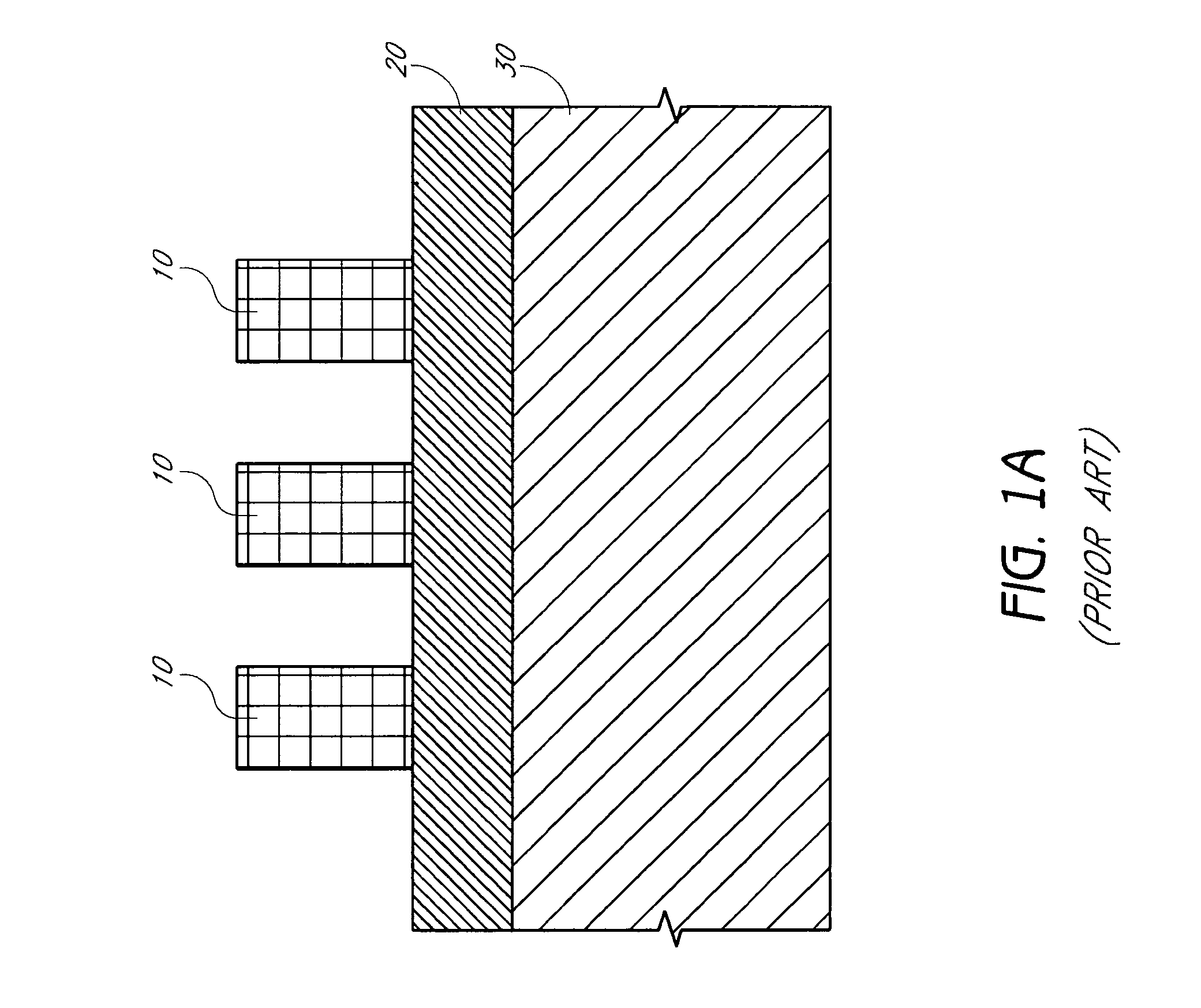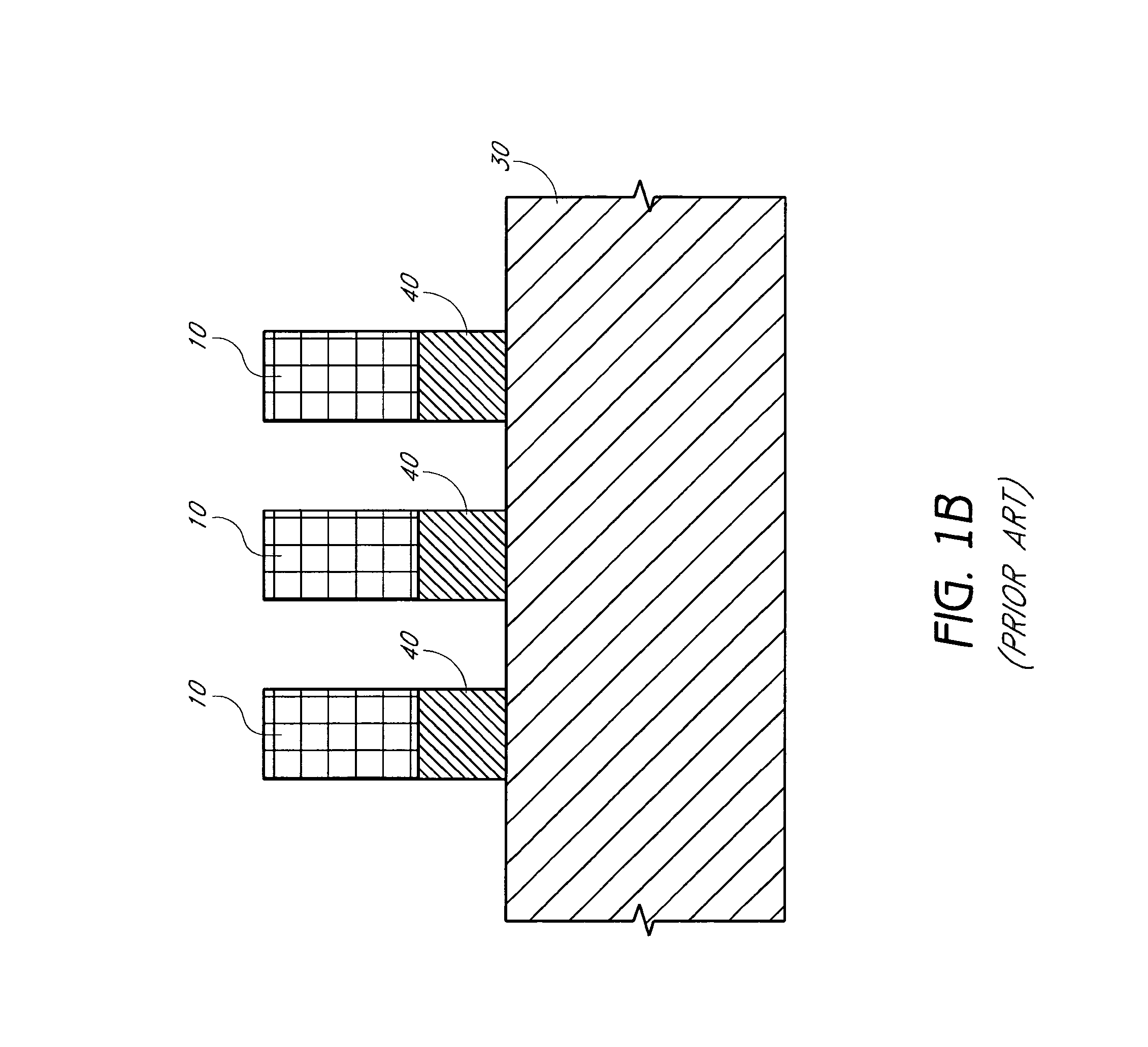Methods for forming arrays of small, closely spaced features
a technology of arrays and features, applied in the direction of basic electric elements, electrical equipment, semiconductor devices, etc., can solve the problems of insufficient resolution and fidelity of existing techniques, large additional steps, and transfer of very fine patterns to underlying layers
- Summary
- Abstract
- Description
- Claims
- Application Information
AI Technical Summary
Problems solved by technology
Method used
Image
Examples
example 1
[0185]FIGS. 29A and 29B are scanning electron micrographs (SEMs) illustrating a dense array of small holes formed according to the described embodiments. These SEMs show holes having a pitch of less than 100 nm , where processing has employed a disposable hard mask and a 248 nm or 193 nm photolithography process.
example 2
[0186]FIGS. 30A-30B are SEMs illustrating a dense array of small holes formed according to the described embodiments. FIG. 30A shows a cross-sectional view wherein the features have a pitch of approximately 140 nm. FIG. 30B shows a cross-sectional view wherein the features have a pitch of approximately 100 nm. These SEMs show an array that was formed using the following sequence of etch parameters:
[0187]
Last SpacerStrip α-CEtchmandrelsSiO2 etchEtch StepStabilization(FIG. 17)(FIG. 17)(FIG. 18)Duration3:000:370:350:35(minutes:seconds)Electrode Spacing27272727(mm)Applied Power (W)0300300300Chamber Pressure656515065(mT)Flow rate of C4F89909(sccm)Flow rate of CHF32020020(sccm)Flow rate of Ar450450100450(sccm)Flow rate of O200400LO (sccm)
[0188]
Temperatures (° C.)Upper ElectrodeWallLower ElectrodeTemperatureTemperatureTemperature706040
example 3
[0189]FIGS. 31A-31C are SEMs illustrating a dense array of small holes formed according to the described embodiments. The illustrated pattern was transferred into an underlying PSG insulator and a hard mask was stripped off in-situ. The pitch is approximately 100 nm in two perpendicular dimensions, as illustrated by FIGS. 31B and 31C. The array depicted in FIGS. 31A-31C has features that do not line up directly, but are offset in a regular wavy pattern. BeCause of this wavy pattern, the holes may not be square or rectangular, but instead resemble a trapezoid. Furthermore, the vertical walls do not appear to be completely sheer and perfectly vertical. As these figures illustrate, there are many embodiments and configurations covered by the inventions disclosed herein.
PUM
 Login to View More
Login to View More Abstract
Description
Claims
Application Information
 Login to View More
Login to View More - R&D
- Intellectual Property
- Life Sciences
- Materials
- Tech Scout
- Unparalleled Data Quality
- Higher Quality Content
- 60% Fewer Hallucinations
Browse by: Latest US Patents, China's latest patents, Technical Efficacy Thesaurus, Application Domain, Technology Topic, Popular Technical Reports.
© 2025 PatSnap. All rights reserved.Legal|Privacy policy|Modern Slavery Act Transparency Statement|Sitemap|About US| Contact US: help@patsnap.com



